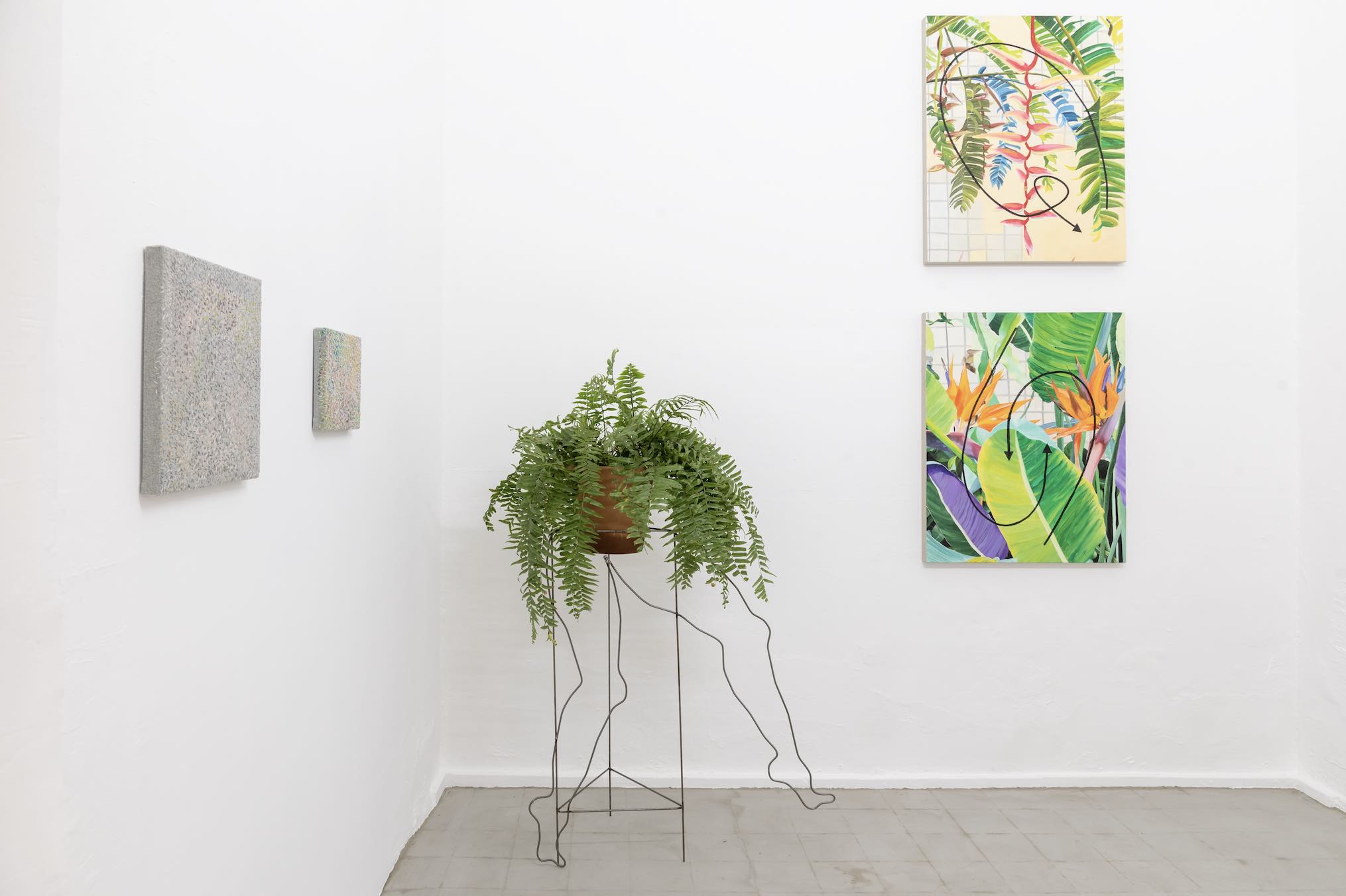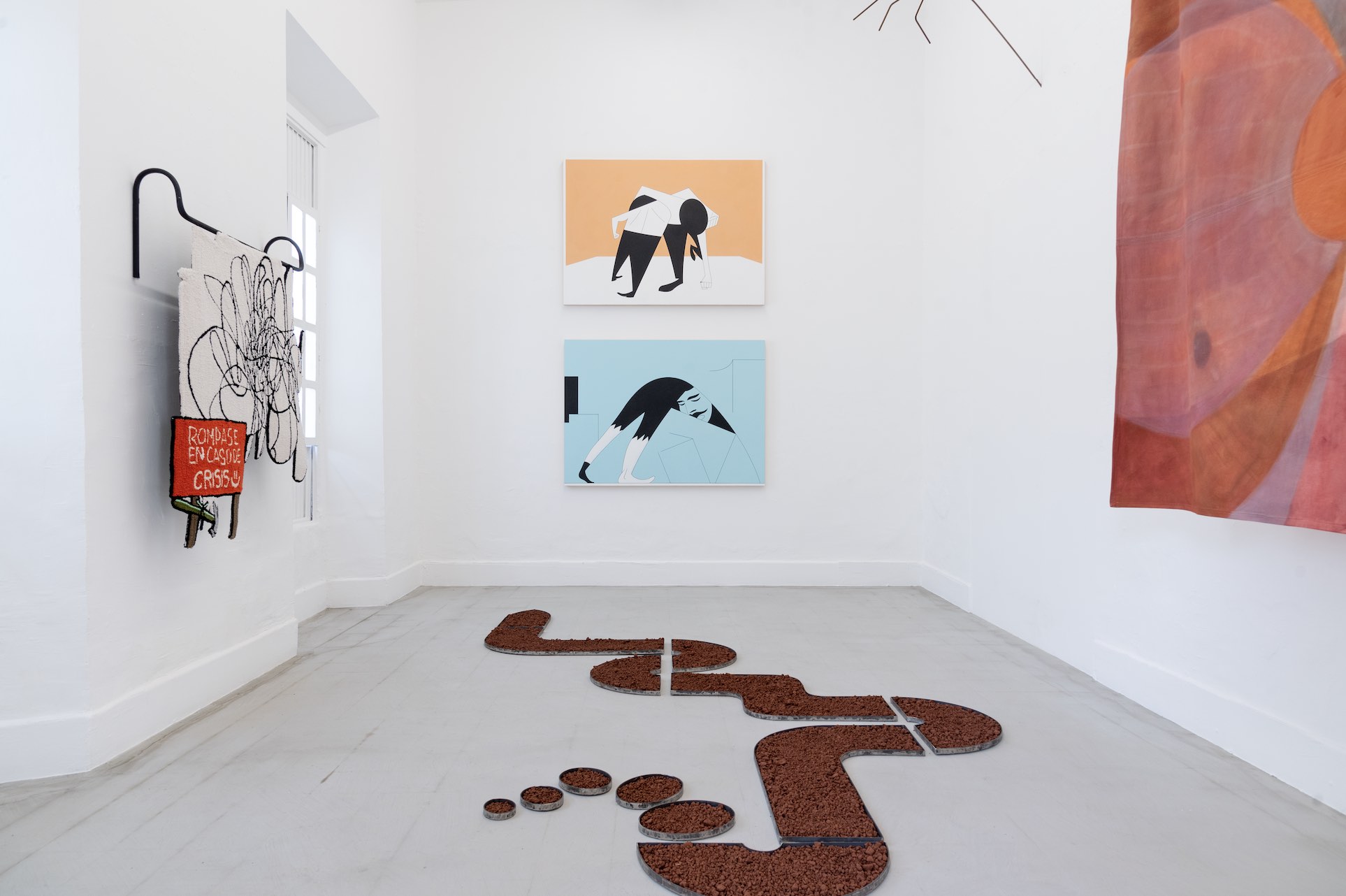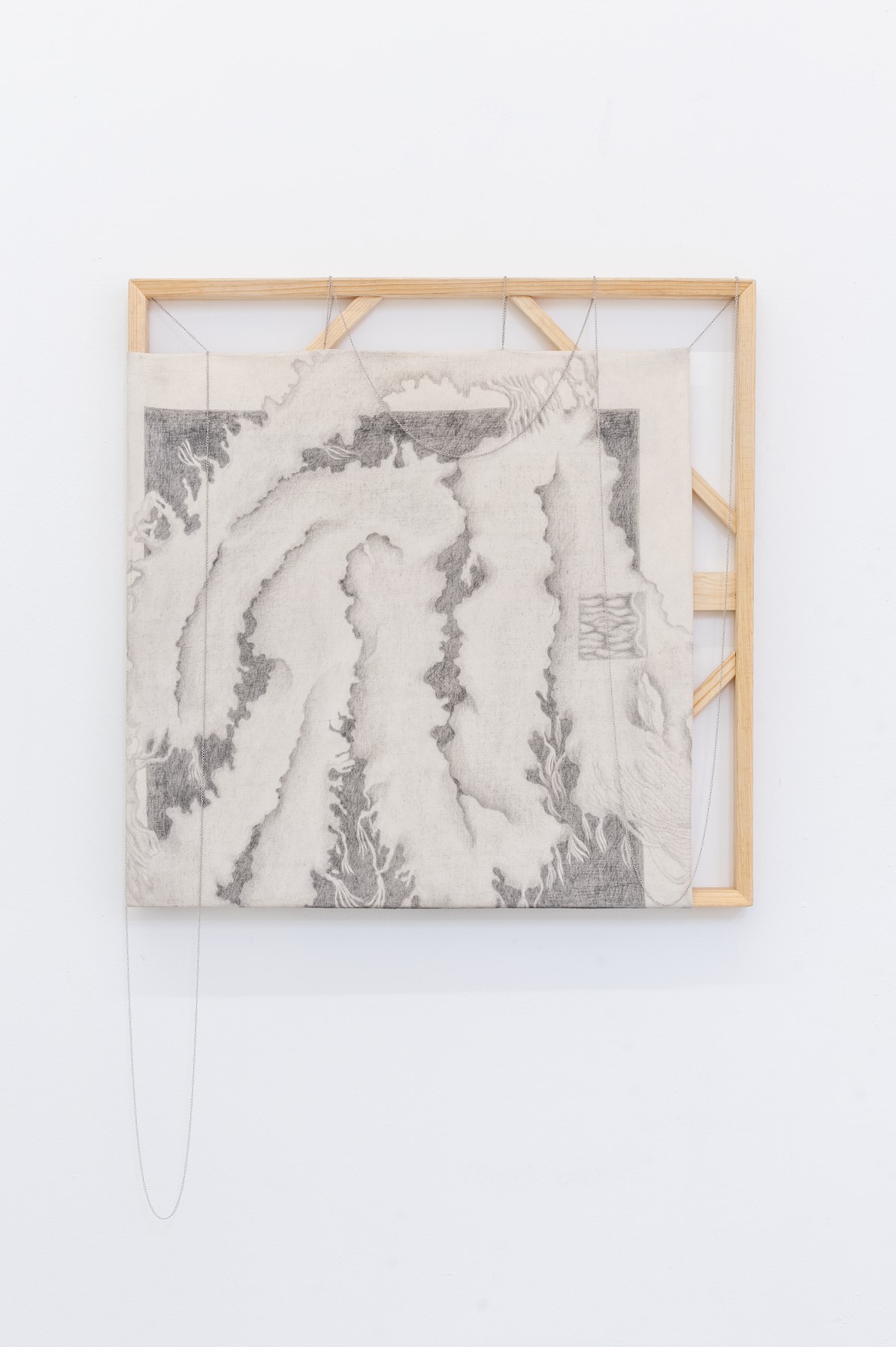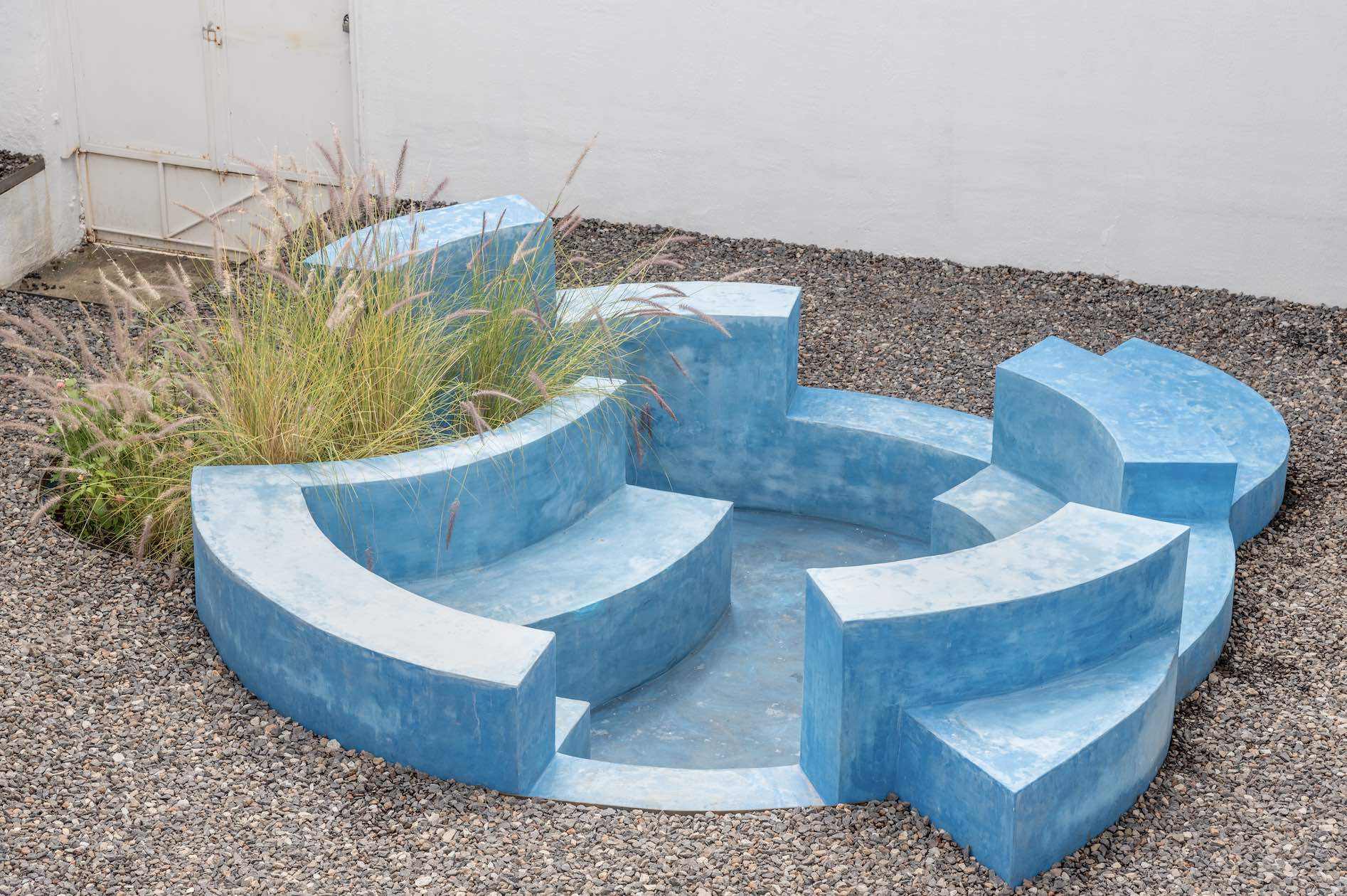
Review
A Wager on and Outside the Center: guadalajara90210 Opens a New Location
by Alejandra Carrillo
Reading time
6 min
The gallery guadalajara90210, based in the homonymous city, continues pursuing its vision: an art that is possible and desirable outside of Mexico City, in constant dialogue with global contemporary art. Its new location inaugurates a new stage in its history.
The gallery and its creators—Alma Saladin, Marco Rountree, and Alberto López Corcuera—continue wagering on Guadalajara. They say that the project has followed its natural course, that although it has been important to maintain a location in Guadalajara (they’re originally from Mexico City), it is the city itself and its creative energy—as well as the artistic community and its enthusiastic members—that have kept the space alive.
The truth is that, against all odds, they have maintained a space of national and international presence in a city that, although it has grown exponentially for decades, does not have the same kinds of facilities as the art market of Mexico’s capital. For many, Guadalajara is still provincial, but not for guadalajara90210. They began in 2017 with a space in colonia Americana, the epicenter of the artistic and commercial movement dedicated to the Guadalajara lifestyle (highly rated restaurants, nightclubs, shops, and bookstores). But then, owing to the rise in rents caused by such phenomena as gentrification, they had to move their headquarters to an unusual space: Colonia Seattle, in the municipality of Zapopan, characterized by its outdoor areas that at one time were corrals and which were then transformed into rooms allowing sculptures to withstand the elements.

After a few years experiencing mobility difficulties outside of the center of Guadalajara, Marco and Alma decided to move. In August they found a more suitable space for the next stage of the gallery: a mansion in the Moderna neighborhood—at the epicenter of a living cultural circuit— that almost looks like a palace: with columns, high ceilings, and large windows that may be related to to the Porfiriato and its architectural effervescence in the city, a few minutes from the Historic Center.
After several months of maintenance work, which still continues in the space, they opened the building’s doors with its new face dedicated to contemporary art, leaving impeccable all the walls that had deteriorated after almost two years of neglect, where light enters in gushes and the sunset floods the corners of the interiors. In addition, it has a large open space where works by more than 30 international artists are currently being exhibited as part of the inaugural exhibition, Formas silenciosas. According to Alma, this exhibition is a declaration of the principles guiding guadalajara90210 in its current direction.

Yet another wager can be noted in the diversity of visual discourses, the risk in the use of materials ranging from ceramics to metal, the living character of plants, oil paint, tezontle, textiles, and marble. The textual, the abstract, collage, the graphic, the astronomical. Dance, landscape, comics, and literature. John Cage and Benito Juárez.
The building, evincing an eclectic architectural style, is listed in the state of Jalisco's State Inventory of Cultural Heritage as a Building of significant artistic value. Although there is no precise data about the work’s author or about the original use of this ten-room building in the heart of one of the city’s most traditional neighborhoods, it is known to have been built at the beginning of the last century, probably between 1900 and 1920. “Architecture is very important for this project. We always like spaces that are out of the ordinary,” says Alma Saladin. “We don’t have an ideal space in mind; once we decide to look for a space we check out warehouses, homes, commercial premises—we’re open to what’s available, whatever suits our possibilities, seeing how it all vibrates and thinking about how we can adapt,” says Marco.

That certain beginning-of-the-century halo can be seen above all in the façade, decorated with red tezontle stone that, in modern times, seems more like an anomaly in the landscape of small houses in narrow streets. It is a cool house: almost cold because of its adobe walls. Luckily, it has not been aggressively intervened on since its construction, which is almost a miracle considering the real estate voracity that Guadalajara is currently experiencing, especially in its most central areas, where old houses of great architectural value are demolished in order to construct apartment buildings.
This is not a space of absolute silence, since as the visitor walks through it they can hear how the street follows its normal course: the passage of cars with Regional Mexican music at full volume and motorcycles with thunderous exhaust pipes. All around the neighborhood is alive. Different social classes coexist, but above all it is a working-class area. There are tire shops, groceries, diners, bakeries, and neighbors who continue inhabiting the center. Alma says that they have plans for the future that include these people: they seek to open creative workshops for the community and guided tours aimed at schools of basic learning located near the gallery.

This building with long hallways and immense patios has never been a space for silence and isolation; in its time it was a kind of school that served as the headquarters for Jalisco Child Care, which offered preschool care services. This trait of the school—the hustle and bustle of people entering and leaving—is preserved in the new location of guadalajara90210, which now, in addition to exhibiting the work of artists from Jalisco, Mexico, and Latin America, shares the space with ten artists who opened their studios in rooms of the house. Among them are Héctor Rentería, Claudia Cisneros, Mónica Leyva, Hiram Constantino, Diego González Gómez, and Sonia Bandura. “They’re close friends and artists whose work is related to the gallery’s aim of always being open; we try to collaborate with many different generations and styles. Sometimes I think we exaggerate with collaborations, but for good: these large exhibitions that include so many different people are part of this attempt to meet and collaborate,” says Marco.
Alma and Marco affirm that they do not conceive the studios as something separate from the exhibition rooms, but rather seek to understand the gallery as a space for the transit of ideas and knowledge.
Although they are currently open to the public for free only three days a week—Thursday and Friday from 3 PM to 7 PM and Saturday from 11 AM to 3 PM—there are always people coming and going, as well as conversations among artists and studio visits.
More information about guadalajara90210’s exhibitions can be found at guadalajara90210.com/ and at www.instagram.com/guadalajara90210/.
Translated to English by Byron Davies
Published on September 17 2022